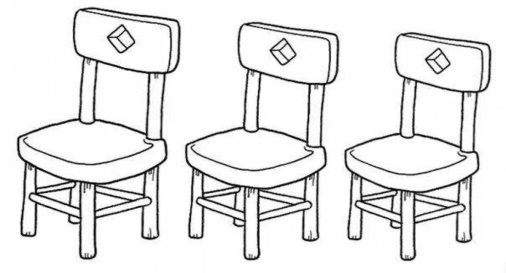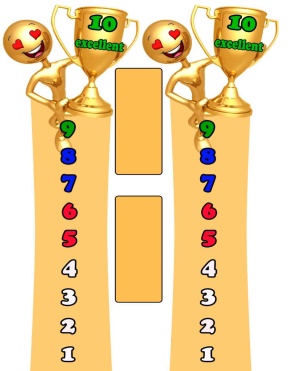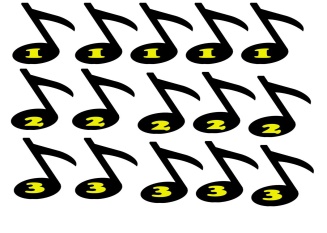
Short term plan: term 3
|
Unit: 5 Art and Music |
Lesson 33 |
||
|
Teacher name: |
|
||
|
Date: |
|
||
|
Grade: 3 |
Number present: |
absent: |
|
|
Lesson title |
Drawing chairs |
||
|
Learning objectives |
3.3.3.1 read short, uncomplicated fiction and popular science texts on a limited range of general and educational topics with standard support; 3.3.5.1 understand the main ideas of short simple texts on common familiar topics and some educational topics with the help of contextual hints; 3.3.6.1 understand with considerable support factual information and details in short uncomplicated texts on a limited range of general and educational topics; |
||
|
Lesson objectives |
Learners will be able to: - To talk about and practise cool and warm colours; |
||
|
Value links |
Family – Family values are moral and ethical principles of typical family life, including sacrificing for loved ones, putting your loved ones first, and keeping your loved ones at the centre of your thoughts and actions. |
||
|
Plan |
|||
|
Stages / Time |
Teachers actions |
Students actions |
Assessment criteria |
Resources |
|
Beginning of the lesson Warming-up
3 min. Pre-learning «Brainstorming» method 7 min. |
Organization moment : 1.Greeting. Ask about the weather. The teacher sets the lesson objectives, letting students know what to anticipate from the lesson. Warming up Where are you from? How old are you? What color is it? How many students are there in class? What day of the week today? Hand out the completed Progress Report Cards for the previous module and ask the pupils to file them in their Language Portfolios. Lead – In
|
The aim: To develop pupils speaking skills and create friendly atmosphere Efficiency: By wishing each other they feel better and feel the support of others Students of the class are listed. Students' attention is drawn to the lesson. Students say different words from the picture •Learners remember previous lesson vocabulary •Learners answer the questions |
The teacher to assess learners for their ability. “Good job! Well done!” Formative Assessment
Good job! Descriptor: - remembers the lesson passed Point 1 Assessment criteria make basic statements related to personal information, people and objects on familiar topics and classroom routines |
Pictures worksheet Picture |
|
Middle of the lesson Presentation part. 30 min |
Ex:1 P:65 Put up Vincent van Gogh’s paintings you have brought to class. Explain to the pupils, in L1 if necessary, that these paintings belong to Vincent van Gogh. Ask them to tell you if they know them and describe what they can see in each. During this stage you can say some things about the painter. Ex: 2 P: 65 Explain, in L1 if necessary, that we divide colours in two groups. Cool colours (green, blue, violet) have a calming effect and are linked with health, the environment and harmony. Warm colours (red, orange, yellow) are associated with love, excitement, anger, power, happiness and energy. Name colours in random order. Ask pupils if it is a warm or cool colour. Add the word to the appropriate group. Ex: 3 P: 65 Ask pupils to complete the drawing. If you wish you can tell pupils to draw the chair on a piece of paper. Ex: 4 P: 65 Explain the activity. Pupils choose any colour they like, cool or warm, and colour the chair. Alternatively you can ask them to paint half the chair with a cool colour and the other half with a warm colour. When they finish they can show their drawings to the class Conclusion during the lesson some tasks differentiated by outcomes of the students and by their abilities. |
• learners look at the picture. Answer the question. What’s the name of the painting? What’s the name of the painter? ANSWERS name of painting: Bedroom in Arles name of painter: Vincent van Gogh • learners answer the question. How many cool colours are there in the painting? How many warm colours? ANSWERS There are three cool colours: green, blue, violet. There are three warm colours: red, orange, yellow. • learners complete the drawing. ANSWERS
• learners now choose a cool or a warm colour and colour the chair in Ex.3 Present it to the class. A |
Descriptor: - look at the picture - answer the question Total: 3 point
Self assessment Descriptor: - answer the question. Total: 3 point Differentiation: «Verbal support» method is used to help Ss use new words in the sentences. Descriptor: - complete the drawing. Total: 3 point Descriptor: - choose a cool or a warm colour - colour the chair -Make CCQ questions Yes / No |
Card Worksheet Students book |
|
End of the lesson 5 min |
FEEDBACK Learners provide feedback on what they have learned at the lesson. Ex: P: Home task: Write the days |
|
Poster Success
|
|
жүктеу мүмкіндігіне ие боласыз
Бұл материал сайт қолданушысы жариялаған. Материалдың ішінде жазылған барлық ақпаратқа жауапкершілікті жариялаған қолданушы жауап береді. Ұстаз тілегі тек ақпаратты таратуға қолдау көрсетеді. Егер материал сіздің авторлық құқығыңызды бұзған болса немесе басқа да себептермен сайттан өшіру керек деп ойласаңыз осында жазыңыз
Drawing chairs 3 сынып
Drawing chairs 3 сынып
Short term plan: term 3
|
Unit: 5 Art and Music |
Lesson 33 |
||
|
Teacher name: |
|
||
|
Date: |
|
||
|
Grade: 3 |
Number present: |
absent: |
|
|
Lesson title |
Drawing chairs |
||
|
Learning objectives |
3.3.3.1 read short, uncomplicated fiction and popular science texts on a limited range of general and educational topics with standard support; 3.3.5.1 understand the main ideas of short simple texts on common familiar topics and some educational topics with the help of contextual hints; 3.3.6.1 understand with considerable support factual information and details in short uncomplicated texts on a limited range of general and educational topics; |
||
|
Lesson objectives |
Learners will be able to: - To talk about and practise cool and warm colours; |
||
|
Value links |
Family – Family values are moral and ethical principles of typical family life, including sacrificing for loved ones, putting your loved ones first, and keeping your loved ones at the centre of your thoughts and actions. |
||
|
Plan |
|||
|
Stages / Time |
Teachers actions |
Students actions |
Assessment criteria |
Resources |
|
Beginning of the lesson Warming-up
3 min. Pre-learning «Brainstorming» method 7 min. |
Organization moment : 1.Greeting. Ask about the weather. The teacher sets the lesson objectives, letting students know what to anticipate from the lesson. Warming up Where are you from? How old are you? What color is it? How many students are there in class? What day of the week today? Hand out the completed Progress Report Cards for the previous module and ask the pupils to file them in their Language Portfolios. Lead – In
|
The aim: To develop pupils speaking skills and create friendly atmosphere Efficiency: By wishing each other they feel better and feel the support of others Students of the class are listed. Students' attention is drawn to the lesson. Students say different words from the picture •Learners remember previous lesson vocabulary •Learners answer the questions |
The teacher to assess learners for their ability. “Good job! Well done!” Formative Assessment
Good job! Descriptor: - remembers the lesson passed Point 1 Assessment criteria make basic statements related to personal information, people and objects on familiar topics and classroom routines |
Pictures worksheet Picture |
|
Middle of the lesson Presentation part. 30 min |
Ex:1 P:65 Put up Vincent van Gogh’s paintings you have brought to class. Explain to the pupils, in L1 if necessary, that these paintings belong to Vincent van Gogh. Ask them to tell you if they know them and describe what they can see in each. During this stage you can say some things about the painter. Ex: 2 P: 65 Explain, in L1 if necessary, that we divide colours in two groups. Cool colours (green, blue, violet) have a calming effect and are linked with health, the environment and harmony. Warm colours (red, orange, yellow) are associated with love, excitement, anger, power, happiness and energy. Name colours in random order. Ask pupils if it is a warm or cool colour. Add the word to the appropriate group. Ex: 3 P: 65 Ask pupils to complete the drawing. If you wish you can tell pupils to draw the chair on a piece of paper. Ex: 4 P: 65 Explain the activity. Pupils choose any colour they like, cool or warm, and colour the chair. Alternatively you can ask them to paint half the chair with a cool colour and the other half with a warm colour. When they finish they can show their drawings to the class Conclusion during the lesson some tasks differentiated by outcomes of the students and by their abilities. |
• learners look at the picture. Answer the question. What’s the name of the painting? What’s the name of the painter? ANSWERS name of painting: Bedroom in Arles name of painter: Vincent van Gogh • learners answer the question. How many cool colours are there in the painting? How many warm colours? ANSWERS There are three cool colours: green, blue, violet. There are three warm colours: red, orange, yellow. • learners complete the drawing. ANSWERS
• learners now choose a cool or a warm colour and colour the chair in Ex.3 Present it to the class. A |
Descriptor: - look at the picture - answer the question Total: 3 point
Self assessment Descriptor: - answer the question. Total: 3 point Differentiation: «Verbal support» method is used to help Ss use new words in the sentences. Descriptor: - complete the drawing. Total: 3 point Descriptor: - choose a cool or a warm colour - colour the chair -Make CCQ questions Yes / No |
Card Worksheet Students book |
|
End of the lesson 5 min |
FEEDBACK Learners provide feedback on what they have learned at the lesson. Ex: P: Home task: Write the days |
|
Poster Success
|
|

шағым қалдыра аласыз






 NSWERS
NSWERS

















